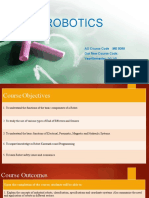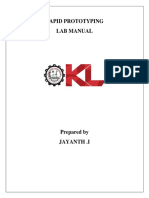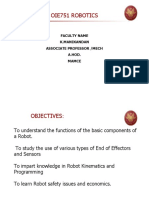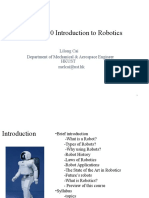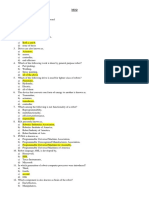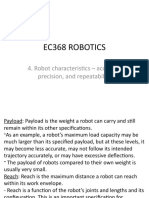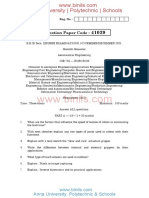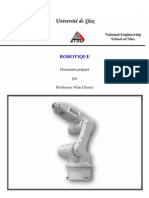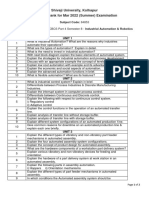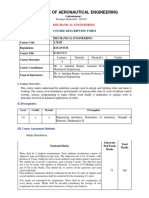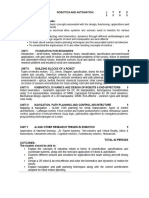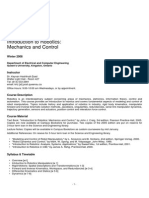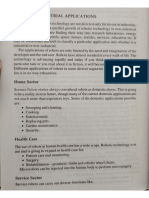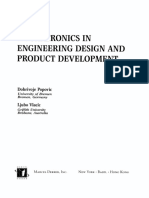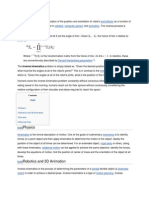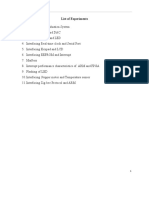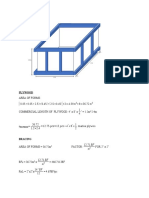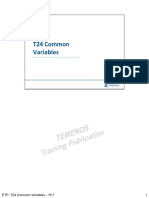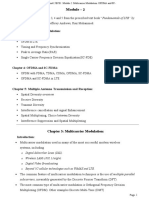0% found this document useful (0 votes)
625 views2 pagesSyllabus - Robatics
This document outlines the objectives and units of a robotics course. The objectives are to understand the basic components of robots, various end effectors and sensors, robot kinematics, programming, and safety and economic issues. The 5 units cover fundamentals of robots, drive systems and end effectors, sensors and machine vision, robot kinematics and programming, and implementation and economics. Upon completing the course, students will be able to apply basic engineering knowledge to robot design. The document provides 7 textbooks and references related to robotics, mechanics, programming, applications, and industrial automation.
Uploaded by
Satheesh KumarCopyright
© © All Rights Reserved
We take content rights seriously. If you suspect this is your content, claim it here.
Available Formats
Download as DOCX, PDF, TXT or read online on Scribd
0% found this document useful (0 votes)
625 views2 pagesSyllabus - Robatics
This document outlines the objectives and units of a robotics course. The objectives are to understand the basic components of robots, various end effectors and sensors, robot kinematics, programming, and safety and economic issues. The 5 units cover fundamentals of robots, drive systems and end effectors, sensors and machine vision, robot kinematics and programming, and implementation and economics. Upon completing the course, students will be able to apply basic engineering knowledge to robot design. The document provides 7 textbooks and references related to robotics, mechanics, programming, applications, and industrial automation.
Uploaded by
Satheesh KumarCopyright
© © All Rights Reserved
We take content rights seriously. If you suspect this is your content, claim it here.
Available Formats
Download as DOCX, PDF, TXT or read online on Scribd
/ 2

